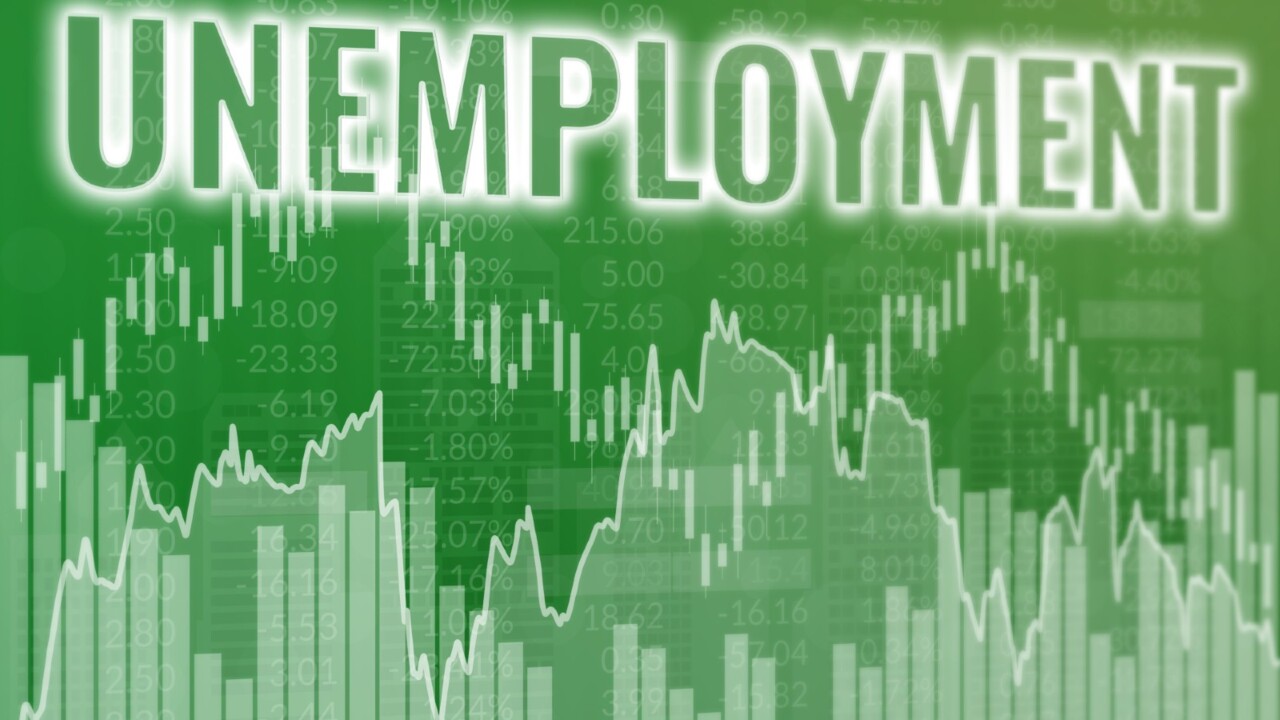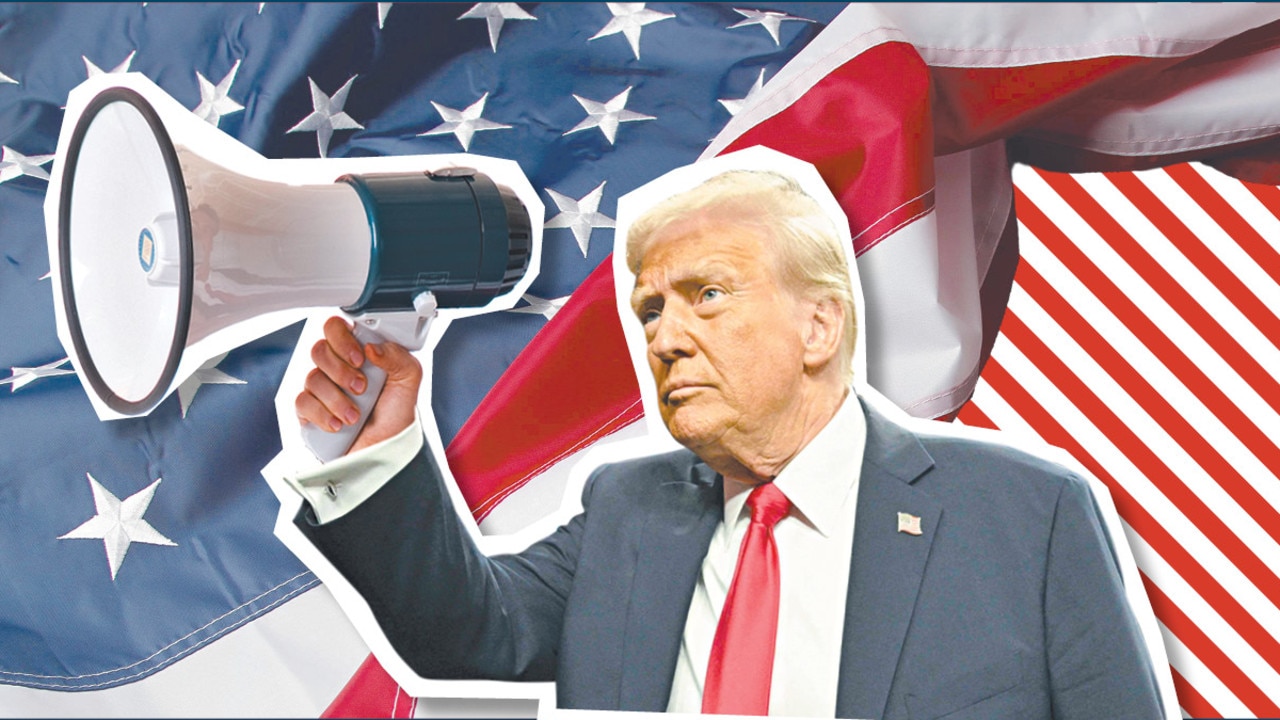Markets soar but jobs data ‘no smoking gun’ for slowdown
A surprise rise in the unemployment rate fuelled interest rate cut speculation and sent the share market strongly up, but beware a false signal of an easing labour market.

An unexpectedly-large rise in the unemployment rate has again fuelled speculation that interest rates could be cut by year-end sending the share market soaring as bond yields tumbled.
But as was the case in January, when the jobless rate also hit a two-year high of 4.1 per cent, the latest data doesn’t necessarily confirm that Australia’s labour market is loosening enough to keep wage demands in check and eliminate the scourge of inflation any faster than the RBA has projected.
The S&P/ASX 200 share index hit a six-week high of 7900.2 points, before closing at 7881.3 – up 1.65 per cent – for its best day in five months.
The 10-year bond yield hit a five-week low of 4.17 per cent and the policy sensitive 3-year bond yield fell as much as 15 basis points to 3.81 per cent after the data.
The Aussie dollar shied off a four-month high of US67.14c reached after lower-than-expected US CPI and retail sales data lowered US bond yields on Wednesday.
However the rise in the official unemployment rate for April was partly driven by an “elevated technically-unemployed-but-waiting-to-start cohort” that gave a false signal of an easing labour market in the first few reports of this year, said RBC chief economist Su-Lin Ong.

“Our read is that this was in fact not a terribly-weak report, and didn’t deserve the rally we initially saw,” Ms Ong said.
After the jobs data, money market pricing implied a 50 per cent chance of the RBA cutting interest rates by year end, up from about 30 per cent before the jobs data.
Early this week the market saw a 25 per cent chance of an interest rate hike by year end.
But other details of the April labour force data and the commentary provided by the Australian Bureau of Statistics tell a somewhat stronger story on the labour market.
The labour force participation rate rose 0.1 per cent to 66.7 per cent, employment generation was firm at 38,500 versus a consensus estimate of 23,700, hours worked were unchanged and 0.4 per cent higher in trend terms, and these two statements from the ABS’ Bjorn Jarvis stood out.
The ABS said the 30,000 increase in the number of unemployed people “reflected more people without jobs available and looking for work, and also more people than usual indicating that they had a job that they were waiting to start in”.
“The most recent trend data continues to point to a relatively tight labour market, consistent with what we have seen in Single Touch Payroll data and job vacancies data,” said ABS head of labour statistics, Bjorn Jarvis. This “waiting to start” a job story also played out around the start of this year.
The unemployment figure shot up to 4.1 per cent in January before dropping to 3.7 per cent in February.
“The continuation of this noise is making it difficult to get a clear sense of where the labour market is really at,” said RBC’s Ong. “Some of the lift in unemployment might be genuine weakness which can’t be discounted, but clearly not the full amount.”

“There are plenty of offsets from other indicators in terms of the overall labour market read, including hours worked and employment generation.
Trend employment has actually picked up from a low of 25,000 at the beginning of the year to 31,000 in April – more than enough to keep the unemployment rate steady if population growth – driven by net migration - eases a bit as per Treasury forecasts.
“We continue to think the labour market will gradually weaken this year, with an unemployment rate drifting higher towards 4.3 per cent. But this report is no smoking gun,” Ong added.
In her view it will take at several more “clean” months of labour force data to form a clear picture.
“For the RBA, the low signal-to-noise ratio in the jobs report gives them even more reason to sit pat on a 4.35 per cent cash rate and wait for a clearer picture to emerge.”
The Reserve Bank has forecast the unemployment rate would average 4 per cent in the June quarter.
Together with optimistic forecasts for productivity and conservative forecasts for wages, the RBA’s forecasts last month that inflation would only reach the mid-point of its target band by the end of 2026, were based on an assumption of “market pricing” on interest rates. At the time the forecasts were finalized, market pricing implied no rate cuts until mid-2025.
The unemployment would need to keep rising in coming months to become consistent with a so-called “SAHM recession rule”, which the RBA historically indicated was a 0.75 percentage point lift in the unemployment trend from the trough, in this case 3.5 per cent in October 2022, UBS noted.
The level of unemployment likely remains below the “NAIRU” or “full employment” rate, estimated by the RBA to be about 4.5 per cent, and it has been helped by a near-record high participation rate.
Still, the broader underutilisation rate rose to 10.7 per cent, near its highest level since late 2021.
“Overall, the labour market is easing, but remains relatively tight compared with long-run trends,” said UBS Australia chief economist George Tharenou.






